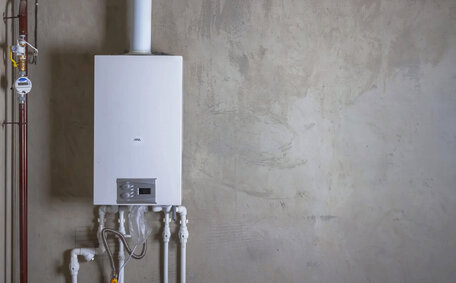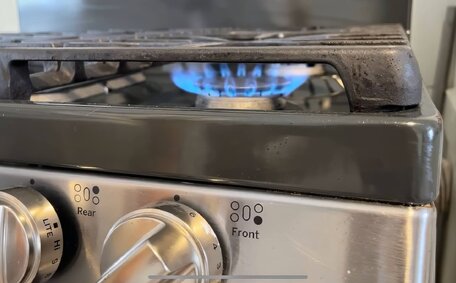How Tree Roots Grow Over Time And Spread To Plumbing Systems
Tree roots instinctively seek out moisture and nutrients, thereby exploiting vulnerabilities in subterranean structures. Typically, root systems affecting sewer lines can extend from two to five times the height of the tree’s canopy above ground.
Over time, thin feeder roots sprout from the primary root structure and traverse great distances, penetrating pipes through existing cracks and gaps. Without immediate intervention, roots can proliferate at a rate of 60 to 120 centimetres annually, encroaching upon critical parts of the plumbing system. Soil conditions, climate, water availability and tree species impact the rate of roots sewer expansion.
As the roots proliferate, the thicker slow-growing roots expand the network both horizontally and deeper into the ground. These roots can become entwined around pipework, with their growth and expansion into the system through minute cracks and joints, which can cause issues. As the roots and woody tissue grows thicker over seasons, they make their way into your sewer, exerting radial pressure that can fracture pipes, joints, and seals.
Ongoing vigilance is crucial since tree root infiltration can gravely compromise the integrity of your plumbing system. Once they have infiltrated, roots causing blockage your pipes will continue to grow, leading to severe clogs, backflows, and potential system failure. Sewer pipes situated beneath a home can attract tree roots with their warmth and nutrients, where even minimal vulnerabilities can result in blockages.
Rapid plumbing problems or slow, intermittent drainage often suggest tree roots are clogging drains, disrupting the flow. Tree root blockages often emerge as an issue from mid-summer to autumn, a time when declining moisture levels intensify root activity as they search for water.
Signs Of Tree Root Damage To Drainage Systems
Several signs suggest trees on your property have roots infiltrating underground drainage systems:
- Slow draining sinks, showers, baths or toilets
- Foul sewage odours emanating from a blocked drain outlet
- Gurgling sounds from toilet bowls or drain outlets
- Backflows of sewage in sinks, bathtubs or toilet bowls
- Cracks in outdoor drains or wet soil patches indicating pipe leaks
- Sewage overflows where roots find their way outside from inspection openings or drains
- Multiple plumbing fixtures malfunctioning at once
- Toilet cisterns running continuously from tiny root perforations
Understanding peak usage periods and seasonal trends assists in managing the root invasion of drains and the dislodgment of partial blockages. A slow response from multiple fixtures often points to roots your drain that are expanding into the shared piping system.
Early detection of root intrusion with a CCTV drain inspection is crucial to prevent damage that could lead to the need for pipe relining or replacement. If you notice blockage signs, a professional plumber should inspect them to pinpoint the breaches using a CCTV camera.
Which Pipes Are Most Vulnerable To Tree Root Invasion
It’s advisable to recognize potential tree threats to your plumbing, particularly older sections composed of clay, iron, or concrete which are especially prone to damage from root invasion. The inherently rigid and compromised nature of these materials, rife with gaps, cracks, and joints, offers numerous entryways for small feeder roots.
Aging clay pipes can develop internal fractures, creating cavities that allow roots to proliferate within your system. Sections that have allowed roots to grow into them eventually collapse, creating depressions or cavities. Concrete pipes are vulnerable at crack points and eroded mortar seals.
Old cast iron drain pipe systems corrode internally and can let tree roots get through and invade via vulnerable rust spots.
In contrast, modern PVC plastic pipes are better than older materials, offering greater resilience with their seamless, impenetrable, and flexible structure. Nevertheless, the hairline joints resulting from heat-sealing on PVC pipes may eventually become entry points for persistent feeder roots. Root-induced blockages are among the most common plumbing challenges, especially in sewer lines over 50 years old.
Your sewer laterals and main stormwater pipes typically receive the most root damage as they carry moisture and nutrients vital for tree growth. When planting, consider the location carefully as tree roots often target vulnerable clay sewer junctions and seek out entry points into your sewer system. Tree roots in your plumbing infiltrate these then spread to the wider network.
Your water supply, including low pressure and tankless water pipes, are also at risk as moisture forms on cold pipe exteriors in winter. Once your blocked interior succumbs, root tips penetrate seeking warmth and roots growing within become thicker inside pipelines.
Methods For Removing Tree Roots And Repairing Damage
The best way to efficiently clear tree roots that have invaded drains and sewer lines is to employ strategies alongside methods to repair any resulting damage:
DIY Methods
- Regularly flushing your drain with boiling water can effectively remove roots and alleviate minor blockages.
- Products containing copper sulphate or rock salt that target sewer main line infiltrations can be poured down drains to poison and curb root growth. Take care using caustic chemicals.
- Root removal with an auger - Insert an auger or plumber’s snake into the pipe to break up and extract visible roots near openings.
Professional Services
- Drain cleaning with Hydrojet can be used to efficiently tackle root blockage, blasting high-pressure water through your pipes and preparing them for relining.
- Root cutting with mechanical sewer rods can prevent tree root damage in your pipework by shredding and removing entangled root bundles.
- Pipe relining - Epoxy resin coatings are applied inside your drain pipes, sealing all cracks and holes to prevent further root intrusion.
- Pipe bursting/replacement - For your sewer pipes that are old and cracked, they can be split open and replaced with new PVC piping using trenchless methods with minimal digging.
For significant root infestations and severe pipe damage, enlist the expertise of our Gold Coast plumbers for dependable solutions. When in need of assistance, simply reach out and call us for prompt service; our very professional plumbing services team is poised to diagnose issues in your drainage system via drain camera inspection and recommend the most effective tactics based on pipe condition.
Root barrier gels, professionally applied during drain repairs, can significantly prevent tree root incursions, deterring regrowth for an extended period. If you suspect that tree roots compromise your system’s efficiency, promptly arrange for an expert assessment from your Glenhaven Plumbing specialist.
Preventing Future Tree Root Damage
There are several effective strategies to help prevent costly tree root damage from occurring in your underground pipes system:
Careful Tree Placement
When planting trees, strategically select locations a minimum of 3 metres from any drainage or sewer lines. Consult experts on tree and shrub species with less aggressive root systems to safeguard your sewer line. Ensure sufficient clearance around pipes to reduce the vulnerability of your drains to root-induced blockages.
Root Barriers
Physical root barriers, installed by professionals around pipes during repairs, can safeguard plumbing by directing root growth and controlling moisture flow.
Pipe Relining
Pipe relining services equip pipes with a strong interior barrier, sealing potential entry points to deter future root invasions.
Drain Maintenance
Routine drain inspections facilitate early detection of root intrusions, preventing major damage. Utilize drain cameras to assess pipe integrity and address any invasive roots.
Pipe Replacements
Replacing damaged sections with new PVC pipe removes existing roots and provides a durable solution resistant to future root infiltration over time.
Preventative strategies greatly reduce the risk of tree root damage to your subterranean water and sewer systems. Contact Glenhaven Plumbing to explore long-term drainage protection strategies.





